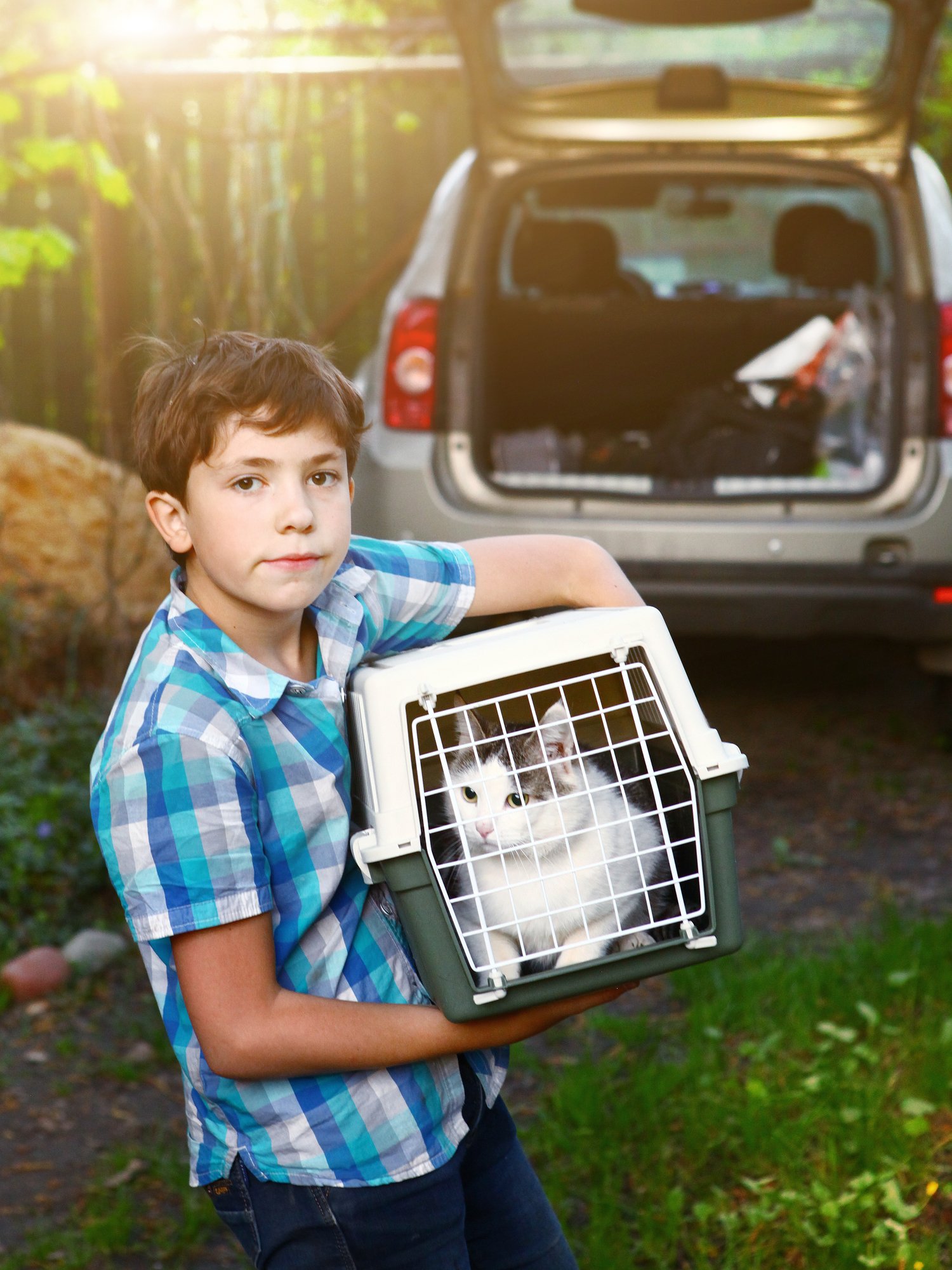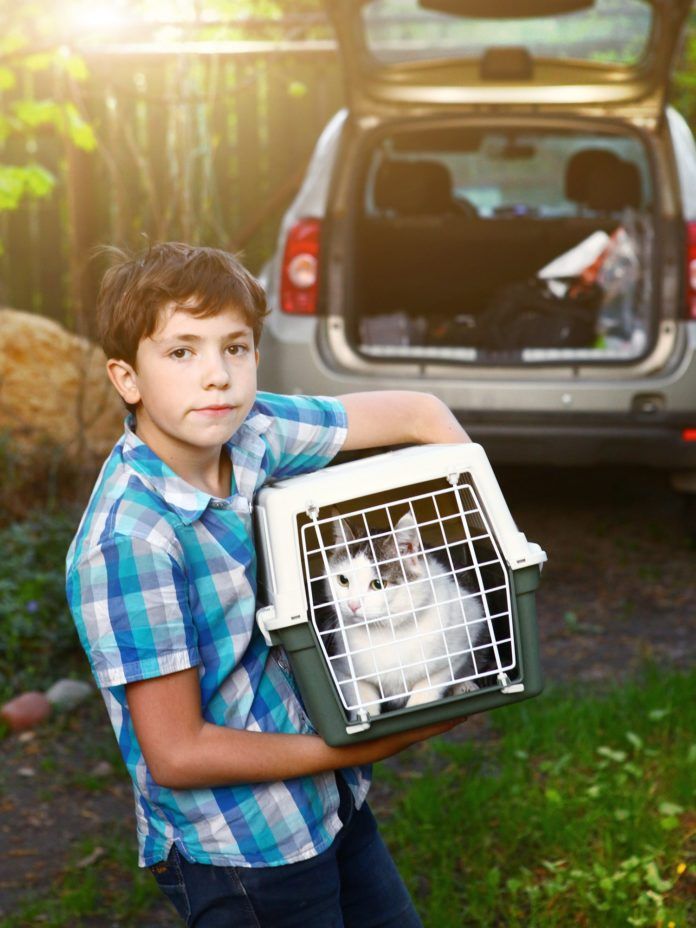© Ulianna19970 | Dreamstim


In a striking visual of the tenacious bond between pets and their human parents, Houston residents remained yards from the safety of the George R. Brown Convention Center during last summer’s Hurricane Harvey because they were not permitted inside with their cats and other companion animals.
Leaving their pets to fend for themselves was out of the question, and they realized that they and their animals might need to face down the storm without emergency shelter. Luckily, empathy triumphed over bureaucracy, and within 24 hours, all area facilities were allowed to accept pets.
Pets are at our mercy
If anything has come from the recent spate of catastrophic atmospheric events, it is that pets are at the mercy of their owners’ loyalty and organizational skills, as well as the rules determined by others that dictate where pets can go in such situations. The unluckiest cats have been abandoned or lost amid the chaos, with some locked in abandoned homes, with no chance of escaping should floodwaters rise.
The luckiest, though impacted so terribly by these weather-related occurrences, were rescued and brought to overburdened animal shelters where they awaited a reunion with their owners or adoption.
How to prepare
The American Society for the Prevention of Cruelty to Animals (ASPCA) released tips for pet owners in the wake of recent disastrous weather events. Clearly, having an emergency kit at the ready for your pet ranks high in suggestions. What you will need is fairly obvious, but perhaps too much to remember in the midst of an emergency. A good way to think about it is to consider what you would bring for a weekend away if you were bringing your cat along.
Packing food and water
Your cat will need to eat and drink so have at least three days worth of food and water for her, along with bowls to eat and drink from. If your cat prefers wet food and her favorite brand does not have an easily removed lid, make sure to keep a can opener with your food and water supplies, as well as a spoon to remove the food from the can. Dry food should be kept in an airtight, waterproof container. Things to bring are: three days worth of food and bottled water; easy-open canned food or a can opener; a spoon to remove wet food from can; or dry food stored in an airtight container.
Remember medication
Bring along your pet’s medications, as well as a first-aid kit consisting of bandage material (non-adhering pads to apply directly to a wound, cotton padding to go over the pad, and an outer wrap such as an ace bandage) and antiseptic.
If your pet’s medication needs refrigeration, place a note reminding yourself to retrieve the bottle and place it in a cooler or insulated lunch bag with freezer packs to keep it from spoiling.
Litter box detail
Do not forget that your cat will need to relieve herself. You might want to purchase a disposable cat litter box that you can have at the ready so that you don’t need to invest in a separate durable litter box. Extra lining for your cat’s carrier is also a good idea in case of an accident.
ID is extra important now
You should have ID tags with rabies certification and contact information, along with your pet’s name, attached to your cat’s collar. But ID tags and/or collars can come off, especially in a situation where your cat becomes lost and pulls her head out of her collar to escape a fence or bush that has a hold of it. That’s why making sure that your cat can be identified is crucial. The ASPCA reminds owners that microchipping is a must.
Your veterinarian can take care of the microchip for you, scanning to see if one is already present (if you didn’t get your cat as a kitten) and if the encoded information needs to be updated, or injecting the tiny information-holding chip between your cat’s shoulder blades. Veterinarians routinely check for microchips when stray pets are brought to them, bringing about many happy reunions.
You should also keep all pertinent records, such as adoption records and vaccination and veterinary history in a plastic watertight bag. For good measure, you can download a free ASPCA mobile app to store your cat’s records so that it will be easier to have her accepted at evacuation facilities. The app also has a disaster preparedness checklist to help you keep track of what you need.
How a harness can help
Though this might sound unusual, a harness might be a good thing to get your cat accustomed to. It can help with getting your cat into her carrier, which is never an easy prospect even for planned veterinary visits.
You can work to make your cat welcome the harness by taking her out on short walks so that she can get a better view of all she sees from the other side of the window from her favorite perch. The exercise is yet another plus for any housebound cat. Should your cat get used to the harness, you can keep her out of her carrier once you get to a safe place, without having to worry that she might run off.
Keep items updated
You will want to rotate the food and water that you keep at the ready. The same goes for medications, which should be current and can be switched out for a fresh supply as time passes. (Again, medication that needs to be kept refrigerated will need to be placed in an insulated bag or box with freezer packs — make sure to keep a note on top of your tote reminding yourself to retrieve the bottle from the fridge.)
Besides these necessities are the extras that make a difference, like a blanket and/or towel or two that smells like home and can cover your pet’s carrier to keep out drafts and provide a sense of safety. You might even want to put in a favorite toy and some edible treats for your cat. Emergency situations can extend beyond a day or two, and having items from home that bring your cat a little comfort can make the experience less traumatic.
Beyond the emergency kit
Even if you have everything set for an emergency, obviously this doesn’t mean that an emergency will strike while you are at home and ready to set into motion all you carefully prepared for. That’s why you will want to have some other options in place.
Choose at least one designated caregiver who might be able to access your home to retrieve your cat and emergency kit in the event that you can’t. You can even prepare in advance by swapping responsibilities with neighbors who have pets so that you are already in the habit of helping each other out.
Your veterinarian can also provide you with a list of kennels and facilities that can keep your cat safe for you. It is also no longer difficult to find hotels and motels that accept pets, which means you might be able to leave your area ahead of the storm and wait in comfort and safety.
Keep up to date as a storm approaches and do not ignore what meterologists and government officials predict. If you are advised to evacuate, do so. The worst-case scenario should the storm come to nothing is a brief time away, well-planned with no harm done.
“It’s critical for pet owners to consider their animals when preparing for any disaster, and we strongly urge them to always bring their animals with them if they have to evacuate their home,” says Tim Rickey, vice president of the ASPCA Field Investigations and Response team, which has been hard-pressed to meet the needs of the many storm-impacted areas this past summer and fall. — Constance Lindner




